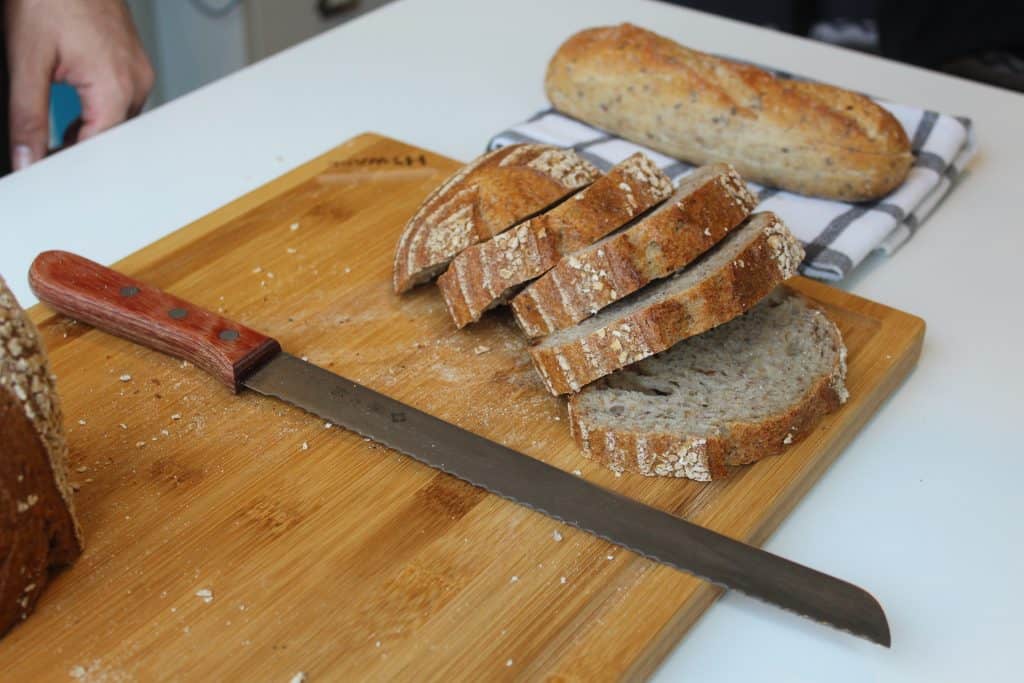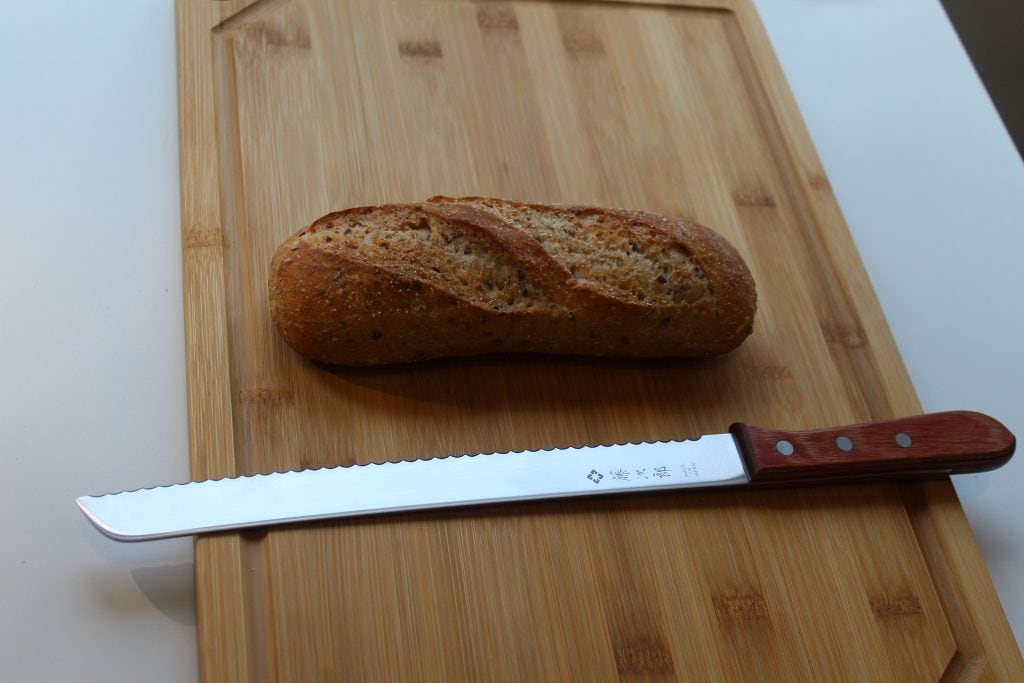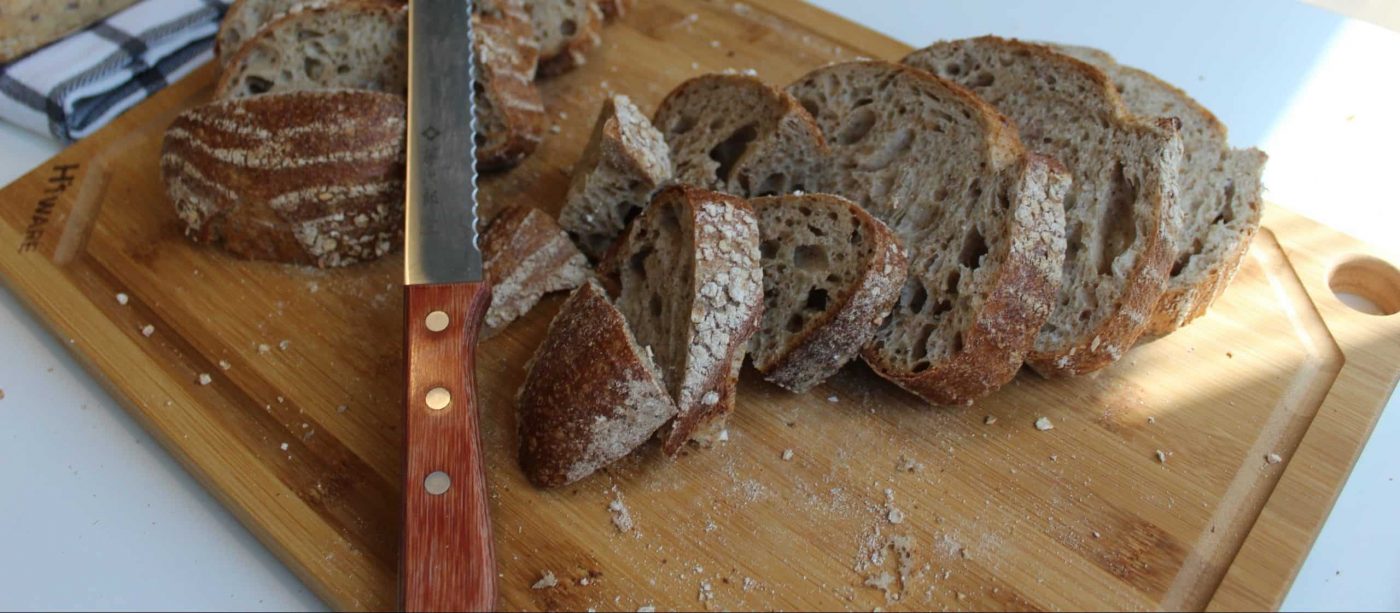Bread knives are specialized to protect soft bread as you slice through it. They’re created to be delicate enough to keep the bread intact while still slicing cleanly through the bread. Without using a proper bread knife, you can expect jagged edges or flattened slices. Thus, it’s necessary to use a bread knife every time you’re slicing a piece of bread.

History of Bread Knives
Bread knives have a humble beginning that started in the kitchens of bread makers and home cooks. Surprisingly, these knives were not invented until 1919. Previously, bread makers would agonize over squished bread as standard knives were not delicate enough to properly slice through loaves. Whether a crusty artisan bread or a soft Italian loaf, each produced loaf was left crunched and misshapen after cutting.
Joseph Burns created the first bread knife in the early 1900s. Then, he went on to create a knife sharpener in the 1940s. These inventions drastically changed the bread and kitchen knife world.
What Is a Serrated Bread Knife?
Bread knives are pretty different than other kitchen knives like a chef’s knife or another straight-edged knife. Bread knives have serrated blades, which help cut through bread loaves with ease. This serrated blade includes jagged edges, which is how you can distinguish this knife from other kitchen knives. This serrated knife helps hold the bread as it is sliced, so it does not shift.
Bread knives have long blades (longer than most other kitchen knives), which helps create a sawing motion when slicing bread. This blade length is intended to aid in cutting through larger bread loaves. Expect to see bread knives up to 14″ in length, though most are around 8″ long. A great example of a bread knife is the Tojiro Bread Slicer.
Find more information in our How to Choose a Bread Knife guide.
Why Should You Use a Bread Knife?
Not only does a bread knife aid you in cutting bread without squishing it, but it’s also much safer. Bread comes in various shapes and sizes, with options that are rounded or ovular. These are challenging to cut, as they can shift while slicing. This sliding can lead to potential injuries. Since the serrated blade keeps the bread in place while you’re cutting, you can easily avoid knife-based injuries.
Using a bread knife also helps keep your kitchen cleaner. Since bread knives are made to cut through bread more easily and without crushing the loaf, you’ll have fewer crumbs after you slice through the loaf.
Find out which knives to use in our 5 Best Bread (Serrated) Knives guide.

Bread Knife Uses
While bread knives are meant for cutting through bread, they are also quite useful for various other food items. A sharp bread knife is also excellent for more delicate pastries, like cakes, since these knives do not crush foods.
They’re also excellent for softer foods like tomatoes, sandwiches, and even bread dough. Any item usually crushed by a knife is an excellent opportunity to use a bread knife instead.
Unfortunately, bread knives are not ideal for use with meat. The serrated edge that gives them power over soft foods does not bode well with meat. Using a bread knife on meat will leave your meat with jagged pieces and perhaps not cut through. It’s best to use a butcher’s knife, carving knife, or boning knife with protein. After your beef or steak is cooked, you can use serrated steak knives and a cutting board to slice it up.
Whether a home baker or a professional baker, using a bread knife with your freshly baked loaves will create a safer and cleaner baking environment. Instead of using a random kitchen knife, consider purchasing or using a good bread knife to help you slice through loaves with ease. Most serrated bread knives are affordable, making them easy to add to your kitchen knife repertoire.




Post Your Thoughts